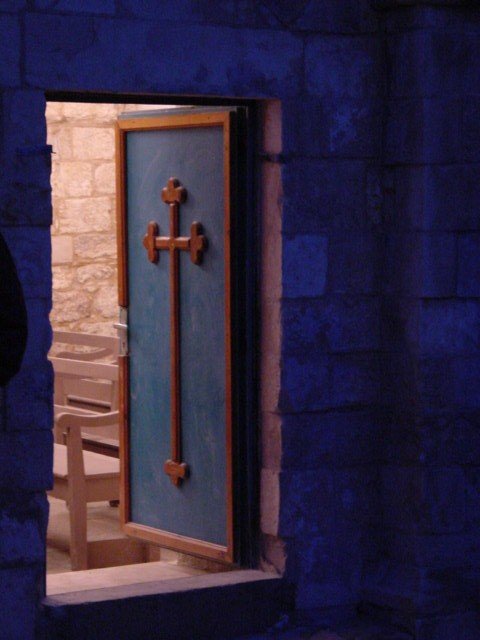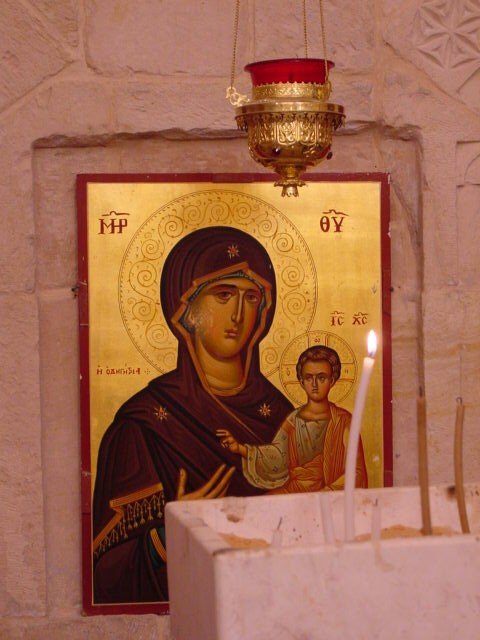November 23, 2001
A small group arrived today from Birzeit University. The students were part of their Palestine and Arabic Studies program, which we had attended this past summer. Together with folks from the University, we went on a whirlwind tour of the area. After a walk through the fields, we hired a taxi and drove into Jenin to see the sights. The usual points of interest notwithstanding (the burned out car on the Misilye road, the roadblocks and trenches, the destroyed buildings), our first landmark was the Old City of Jenin.
The Old City of Jenin.
Part of Jenin’s Old City.
There is an old, old city of Jenin, which are ruins, but we visited the 100-200 year-old one which has recently been restored (even within the last year). As a crowd gathered around us, a man took us to see his house in the Old City. Speaking a near-fluent mixture of German and English, he took us through the old house, which is now used as a basement, and the newer house (at least 100 years old) built on top of it. It was built in an Arabic style with a domed-roof, thick walls, and rooms centering around a main gathering area. He pointed out the bench in one room where in the past women would sit so they could eavesdrop on the conversation of the men in the salon. We all took extensive notes so we knew how to build our next house.
Door to the Burqin Church.
Icon in the Burqin Church.
We then headed off to Burqin, a nearby village of about 6000 with a Christian population of around 100. The Christians are all Orthodox, but their priest (who has to try and come from Beit Sahour near Bethlehem) hasn't come in months. Instead, they've been worshiping regularly at the newly-built Latin Church nearby. The reason this is worth mentioning is that their parish church, St. George's, is better known as the Church of the Ten Lepers, the fourth oldest church in the world. We last visited it in December, and this time we were able to understand more of the story that one of the villagers told about the church. The church is built on the site of a cave which held lepers in the time of Jesus. As Jesus passed by, the lepers cried out. Jesus approached the cave, and a hole opened in the side. That little detail has either survived or originated outside the canonical story (in Luke 17). Our guide also said that the name "Burqin" comes from this event - the Arabic word for lepers is bursin, which simply evolved into Burqin (although a more likely story, upon looking at the dictionary, is that it has something to do with "lightning" - burqin in Arabic and burqim in Hebrew).
We finished with a lovely pasta (pasta?) dinner back at the University, and a dessert of exquisite knaffe (honey, shredded wheat, and cheese topped with pistachios) procured from Jenin.




